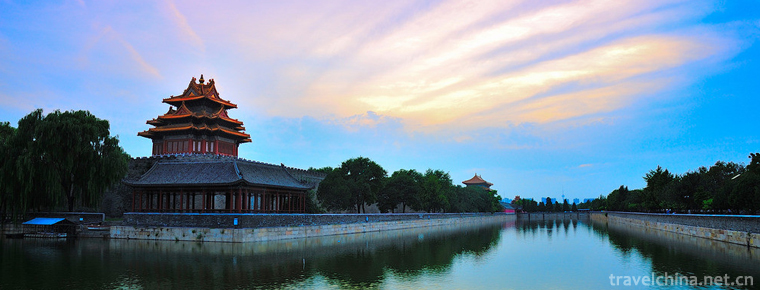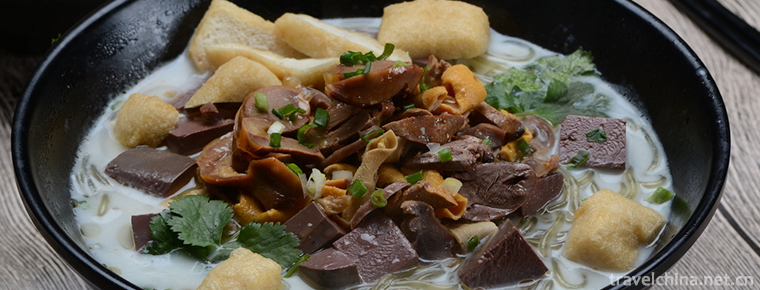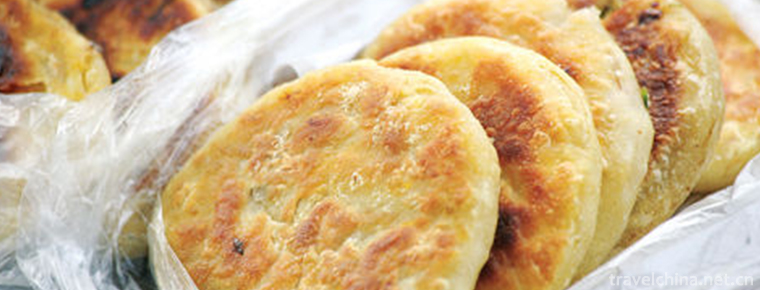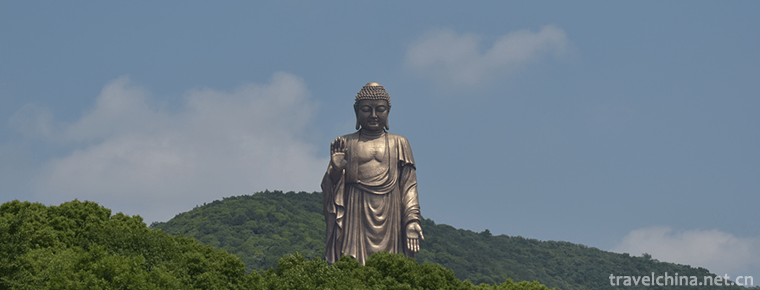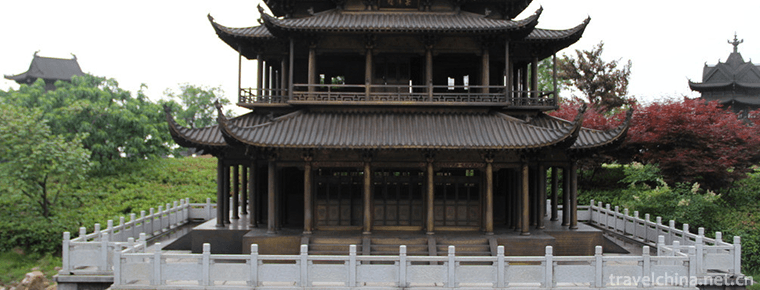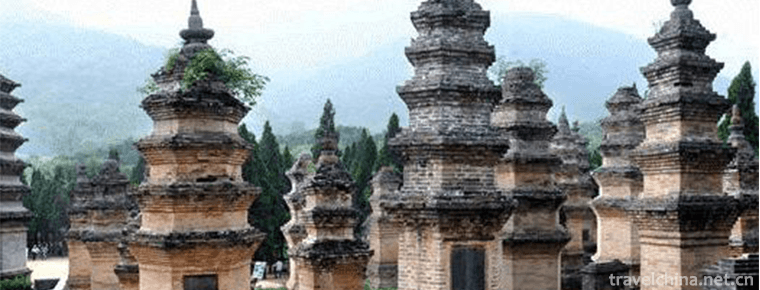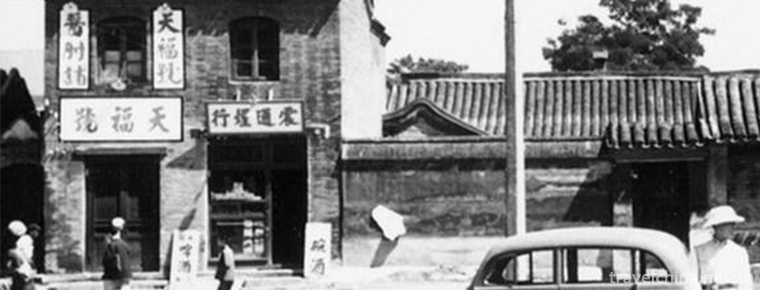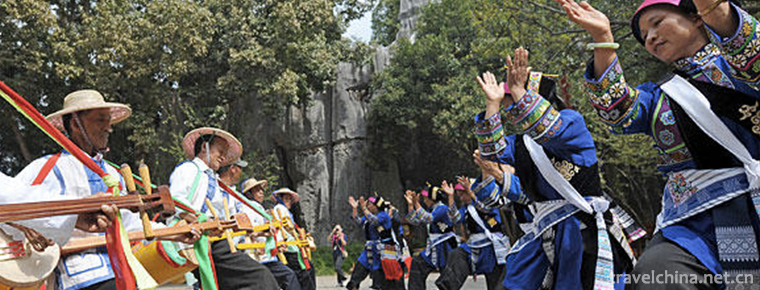Rongxian Giant Buddha
Rongxian Giant Buddha
Located in the eastern suburb of Rongxian County, Sichuan Province, the Giant Buddha of Rongxian county is carved in the Tang Dynasty. It is a cliff carved statue of Sakyamuni, 36.67 meters high, 8.76 meters long, 12.67 meters wide, 12 meters high and 3.5 meters wide. It is the world's largest Sakyamuni Buddha (Modern Buddha).
The Dafo temple covers an area of 20000 square meters, with a building area of 2000 square meters. It is an ancient or antique building. The mountains are covered with green trees. The long-standing cultural landscape and beautiful natural scenery are integrated into one, forming a very attractive scenic spot in southern Sichuan.
Rongxian Giant Buddha is the Sixth Batch of national key cultural relics protection units list, is the national AAAA level scenic spot, is a part of Zigong World Geopark, together with Rongxian Jinhua Alsophila Valley Park and Rongxian Qinglongshan dinosaur fossil Park, it forms the Zigong World Geopark, Rongxian Qinglongshan dragon fearing Stone Group Heritage Park.
Overview of temples
The gate of the temple is in the northwest of the foothills, and the front of the gate is a pair of stone lions, which are majestic and majestic. Enter the mountain gate and step up. The first hall is a double eaves Xieshan temple. Inside the hall, big belly Maitreya is known as the cloth bag monk, commonly known as the big belly arhat and laughing arhat. Most of the offerings in the temple are Buddhas, Bodhisattvas and imported figures. Only this arhat is truly Chinese. Moreover, Rongxian's xiaoluohan is famous in Sichuan. Because of its curly eyebrows and cocky mouth, people who come to see it all laugh. The laughter resonates through Luohan's mouth, and people seem to hear Luohan's "chuckling" laughter. The present statue of the smiling arhat was later made up, although it is different from the previous one. However, the famous calligrapher Liu Qian from Rongxian county is accompanied by the famous calligrapher Liu Qian, which may make up for its shortcomings. Lian Yun: smile when you open your mouth and smile at everything in ancient and modern times; if you have a big belly, you can tolerate heaven and earth, and you can't tolerate it.
On top of the double eaves temple is the Grand Hall of Daxiong. Inside the hall is the Rongxian Giant Buddha carved in stone on the mountain. On both sides are clay sculptures of the earth and Guanyin. In the past, people could only "see the Buddha's head from afar". Close look at the foot of the Buddha. At present, it is a four eaves Xieshan style antique building, full name of the Buddha building, referred to as the Buddha tower. When climbing the Grand Buddha tower, you can not only enjoy the magnificent posture of the Giant Buddha, but also pass through the lotus terrace on the left and turn the roaring platform to the right. On the top of the ten steps, you should reach the Buddha light Pavilion on the top of the head. If you look up, you can see the scenery of Rongcheng. Since the Renaissance of the Qing Dynasty, Rongxian Dafo Temple belongs to Linji sect, one of the Zen schools. All Zen temples must be dedicated to Dharma. In the 21st year of Jiaqing in Qing Dynasty (1816), GUI, the magistrate of the county, donated money to engrave "Damo crossing the river" on the cliff west of the Buddha. Dharma, a monk in southern India, came to Guangzhou from Haidao in the last years of the Southern Dynasties. Emperor Wu of Liang met Jianye (Nanjing), the capital of China, to spread Zen Buddhism. He is the founder of Zen Buddhism in China and is known as the founder of Dharma. The picture of Damo crossing the river in Rongxian county is based on the story of Damo crossing the river to Shaolin Temple in Mount Paoshan after the story of Damo and Emperor Wudi of Liang Dynasty had no chance. The main image of Dharma is 4.9 meters high, almost round sculpture. Dami has a lotus stick, a futon and straw sandals on it. The left hand carries the Buddha beads, and the beads can be counted. The founder has a fat head and a round face. The facial muscles are protruding and the eyes are wide open. It is bright and bright, with open chest and abdomen, and transverse ribs, which makes it brave and powerful. After that, the fish rolled over the waves, and the monks' clothes were rolled up with the wind, and they stepped on the reeds. They turned around and stood in the turbulent waves, which has the charm of "who is the river wide, a reed sailing.".
There are also cliff statues of Tang and Song Dynasties on xiaotai cliff. There are 18 Arhats in the Western Paradise. Among them, the "Luohan group niche" is introduced into the eye-catching niche, which is 3.4 meters high, 4.6 meters wide and 0.46 meters deep. There are six Arhats carved inside, of which three heads have been destroyed. A peach tree is embossed in the middle of the six split Arhats, and a peach is hung on the branch. The arhat, leaning on the peach, has his hands crossed in front of his chest, leisurely and carefree; the other one is facing the peach, seemingly indifferent. The statues show that they are above the world and not moved by Lilo. This kind of sculpture is rare in China and has certain research value. It has been collected by Sichuan Grottoes sculpture, a complete collection of Chinese fine arts. "The total victory of xiaotai county". In the Tang and Song Dynasties, there was a Dong Zi Xuan threshold, and in the Northern Song Dynasty, a "Yisheng Pavilion" was built for people to take temporary nostalgia. If you ascend the stage, you can see the magnificent Buddha in the East and the deep Dragon Cave in the West. Since the Tang and Song Dynasties, this is where people are happy to visit. The buildings and pavilions in history were destroyed early. In 1982, according to the records of ancient books, the former site of "Yisheng Pavilion" in Song Dynasty was surmised, and the "Yisheng Pavilion" was rebuilt on the side of xiaotai for people to have a rest foot view and pay tribute to the ancients.
Historical evolution
The temple where the Giant Buddha is located was named Kaihua temple in the Tang Dynasty, and later called the Buddha Temple. After the restoration of the Song Dynasty, the scale was very large, and the gate of the temple reached the Bank of today's stream. According to the annals of Rong County compiled by Huang Da in Qianlong of the Qing Dynasty, it is said that "the great Foshan is in the east of the city. The Tang people carved the big Buddha, which is in line with the mountain. The hall is ten stories high, 47 Zhang high and 15 Zhang wide. Today, the statue of Buddha is towering, and the banquet couplets are erect. It has not been among the wild weeds for a long time. " According to the annals of Rong County compiled by Zhao Xi, a famous scholar in Sichuan Province in the late Qing Dynasty, the Grand Buddha in Rongxian county was established in 1085 (the eighth year of Yuanfeng), the eighth year of Yuanfeng of song Shenzong, and the seventh year of Yuanyou (1092). However, it is still uncertain when the year 2006 will be engraved.
In the late Ming and early Qing Dynasty, the temple was destroyed by fire and rebuilt during the Jiaqing period of Qing Dynasty. Later, it was renovated and expanded. Due to the limitation of the terrain, the temple could only be built according to the mountain. It retreated back to the mountain gate and spread to the left and right sides with the Buddha as the center. It mainly consisted of the Mahavira hall, the Guanyin hall, the dizang Hall, the Dharma hall, the arhat hall, the Buddhist Scripture building, the Abbot's room, and the Zen hall. At the foot of the mountain, you can see the Zen forest from afar. At the end of Qing Dynasty and the beginning of the Republic of China, the incense in the temple was very strong. The worshippers from neighboring states and counties, who went up to Mount Emei or went down to Baoding, had to pass through the Giant Buddha in Rongxian county. Before and after liberation, the temple was in disrepair for a long time and the temple was damaged. After the "Cultural Revolution", the state allocated special funds for the comprehensive maintenance of temples and extensive planting of trees.
It was announced as a cultural relic protection unit in Sichuan Province in July 1980.
It was approved by the State Council as a key cultural relic in the fifth year of 2006.
In February 2008, Zigong World Geopark was officially approved by UNESCO. Rongxian Giant Buddha, Rongxian Jinhua Alsophila Valley Park and Rongxian Qinglongshan dinosaur fossil Park constitute Zigong World Geopark, Rongxian Qinglongshan dinosaur fossil group Heritage Park.
In 2011, Rongxian Dafosi scenic area was officially established as a national AAAA scenic spot.
Poetic praise
The gate of Dafosi temple was inscribed by Zhao Xi, a native of Rongxian county. There are also many inscriptions of Zhao Xi's calligraphy in the mountain. They are elegant and vigorous, and visitors can stop and enjoy it. Zhao Xi, named Yaosheng and Xiangsong, is a famous poet, poet and calligrapher in the late Qing Dynasty. There are "Xiangsong Ci", "Xiangsong poetry pre collection" and so on. Calligraphy is known as "Rongxian Zhaozi". It is beautiful and obedient, with one tablet. It is the epitome of calligraphy in the late Qing Dynasty. Its fine calligraphy works in his later years are comparable to those in song and Yuan dynasties. In the Republic of China, Zhao Xi went to the Great Buddha Temple and wrote a poem on the platform: the golden statue entered the Taiqing Dynasty and was completed in the eighth year of Yuanfeng Yuanyou.
Rongzhou does not let Jiazhou be good, only Shaoling cloud Fengshui sound.
There are several storeys of Poems Inscribed in the Song Dynasty.
Seeing through Sima's family coldly, sun Deng is a smile from the mountain.
On the hillside of the Buddha cliff, there is a historic site called "xiaotai". It is said that xuanxiao, the son of the Yellow Emperor, took a rest here when hunting. It's for "clamor stage". It is also said that sun Denglai Rong, a famous scholar of Wei and Jin Dynasties, ascended the stage and roared with a melodious voice like the voice of a Phoenix. Therefore, in the Rongzhou tujing of the Northern Song Dynasty, it is called "sundengxiaotai". On the cliff wall, there are two characters of seal script, one meter in diameter, which is written by Zhao Xi. Zhao Xi rarely writes seal script, which is really rare.
There is a "fangweng Pavilion" on the top of the mountain. When Lu you was the judge of Rongzhou in the Song Dynasty, he often went to Da Foshan and left many poems. As he said in his poem, "when the guests are free, they will go to seek the xiaotai longxiu.". In memory of Lu You, his pavilion was named "fangweng Pavilion".
Traffic information
Highway: National Highway g348 (former provincial highway s305) and Leshan Zigong Expressway (south of Rongxian county) run through the whole territory, connecting Leshan and Zigong, and neiwei Rong Expressway (east of Rongxian county) goes out of Neijiang in the East, and Chengdu Yichang Expressway under construction runs through Chengdu and Yibin.
Railway: 45km away from Zigong railway station of Neijiang Kunming railway, and 5km from Rongxian railway station (south section of Jinbi Avenue) of Lezi Luzhou railway to be built.
Aviation: 178.9km to Chengdu Shuangliu International Airport and 160km to Chengdu Tianfu International Airport in the north; 290.8km to Chongqing Jiangbei International Airport and 40km to Zigong Fengming general airport to the East;
Water transportation: 95km to Leshan Wharf in the West and 115km to Yibin Wharf in the south.
Main attractions
Dafo temple is located at the foot of Dafan mountain (also known as zhenruyan) on the outskirts of Rongxian County, Sichuan Province, with an altitude of 414 meters. On the middle of the mountain, there is a towering stone statue of Buddha sitting Buddha, known as Rongxian Giant Buddha. The Buddha is 36.67m in height, 8.76m in head length, 12.67m in shoulder width, 12m in knee height and 3.5m in foot width. It is the world's largest Buddha of Sakyamuni (the present Buddha) and the second largest stone Buddha, second only to Leshan Maitreya Buddha (future Buddha).
The Giant Buddha is majestic, beautiful in shape, smooth in pattern and elegant in charm. In the Qing Dynasty, the Buddha's body was covered with gold, and the clothing pattern was colorful, and the golden light was brilliant. The temple where the Giant Buddha is located is called Kaihua temple in Tang Dynasty, and it has been called Buddha temple since Qing Dynasty. Because of the towering Buddha statues in the temple, the temple in history has a large scale. Unfortunately, it was destroyed by the fire in the late Ming Dynasty. It was rebuilt in Jiaqing period of Qing Dynasty. After nearly two hundred years of expansion and maintenance, the temple has already taken on a considerable scale. Its layout is like a wild goose spreading its wings. The Buddhist temple is far away from the mountain. The ancient temples are well arranged, and the Giant Buddha is particularly spectacular.

-
Duck blood soup with vermicelli
Duck blood vermicelli soup is a famous specialty in Nanjing, belonging to Jinling food....
Views: 217 Time 2018-10-26 -
Huizhou cake
Huizhou cake, originally named "jujube mud crisp baked bread", is a traditional feature in Huizhou area, Anhui Province. .
Views: 223 Time 2018-11-27 -
Grand Buddha at Ling Shan
Lingshan Grand Buddha is a world famous scenic spot, located between the mountains and rivers of Mashan National Scenic Spot in Wuxi City, Jiangsu Province..
Views: 256 Time 2018-12-06 -
Yueyang Tower and Junshan Island Scenic Area
Junshan Island, formerly known as Dongting Mountain, Xiangshan Mountain and Youyuan Mountain, is located in the territory of Yueyang City. It is an island in Dongting Lake, 800 li away from Yueyang To.
Views: 138 Time 2018-12-12 -
Historic Architectural Complex in Heaven and Earth
Historic buildings in Tiandi, World Cultural Heritage, National Key Cultural Relics Protection Units and National AAAAA Tourist Scenic Spots are located in the hinterland and surrounding.
Views: 260 Time 2019-02-21 -
Manufacturing Techniques of Tianfu Sauce Elbow
Tianfu Sauce Meat Shop was founded in 1738, the third year of Qianlong in Qing Dynasty, when Shandong was in a severe drought and there was no grain harvest. Liu Fengxiang, a man from Yexian County, S.
Views: 166 Time 2019-06-20 -
Trichord Dance of Yi Nationality
Trichord dance of the Yi nationality is a folk dance handed down from generation to generation by the people of the Yi nationality. Different areas or different tribes of the Yi nationality have diffe.
Views: 138 Time 2019-07-12 -
Cao Zhi
Cao Zhi (192 - 232 December 27th), Zi Jian, Pei Guo Qiao County (now) Anhui province Bozhou City, born in East Wuyang (now Shenxian, Shandong, Juancheng). Cao Cao He was born with third sons from Quee.
Views: 97 Time 2019-09-07 -
Chuanxindian earthquake site
Compared with Beichuan earthquake site, Yingxiu earthquake site and Hanwang town earthquake site, chuanxindian earthquake site in Shifang has unique advantages. It can fully reflect the great spirit of earthquake relief and has great protection and construction value..
Views: 101 Time 2020-11-05 -
Meishan climate
Meishan city is located in the middle and low latitudes, located in the west of Sichuan Basin and the middle reaches of Minjiang River. It is characterized by the alternation of sea land monsoon every year. It has four distinct seasons, mild climate, abundant rainfall,.
Views: 334 Time 2020-12-18 -
Meishan science and technology
In 2019, 80 science and technology projects above the municipal level will be organized and implemented, and 27.73 million yuan of free science and technology project funds will be put in place. In the whole year, 433 patents were applied and 94 patents were.
Views: 355 Time 2020-12-18
